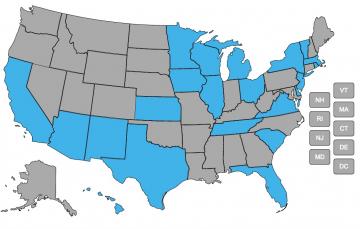Managed Long-Term Services and Supports: Contract Provisions Related to Transition and Diversion from Institutional Placement
As a growing number of states adopt Managed Long-Term Services and Supports frameworks, it becomes imperative that ongoing efforts to promote HCBS over institutional services continue and are integrated into the incentives and requirements of managed care contracts. Managed care can help states accelerate the shift towards the community--or slow and reverse it, depending on the incentives put into requests for proposals and contract language. Many states have successfully used MLTSS quality measures and other contract provisions to reward health plans for transitioning people with disabilities into community-based residences, jobs and day services. Unfortunately, others have adopted contract provisions that limit the plan’s ability or incentive to provide sufficient HCBS to avoid institutional placement or bring people out of institutional settings. This policy brief outlines a variety of contract incentives used by states operating MLTSS programs to prevent unnecessary institutional placement and support plans in transitioning members out of institutions. It includes a review of MLTSS contract language from 23 state contracts.
Last modified Feb 13, 2019

